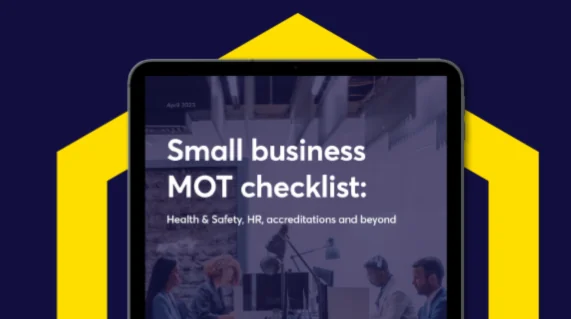Working at Height Risk Assessment
Working at height remains one of the biggest causes of major injuries and fatalities. Some of the most common causes of this include falling from ladders and falling through fragile surfaces.
Our free working at height risk assessment template will help you to:
- Identify risk activities when working at height
- Decide the necessary measures to take
- Make a record of any hazards you’ve identified
- Review the overall assessment steps you’ve taken
What is Working at Height?
Working at height means you’re working where, if no precautions are in place, a person could fall a distance liable to cause personal injury, e.g. falling through a fragile roof.
Working at height is classified as any work performed at a height of two metres or above. Appropriate precautions must be in place to protect employees from injury or harm. You are classed as working at height if you:
- Work above ground level
- Could fall from an edge, through an opening/fragile surface
- Could fall from ground level into an opening in the floor or hole in the ground
Working at height doesn’t include a slip or trip on the level; a fall from height has to involve a fall from one level to a lower level. It also doesn’t include walking up and down a permanent staircase.
How do I comply with the Work at Height Regulations?
The Work at Height Regulations 2005 places a duty on employers and those who control any work at height activity. You must ensure:
- All work at height is properly planned and organised
- Those involved with the work at height are competent to do so
- The risks are assessed and any appropriate equipment is provided and used
- The risks of fragile surfaces are properly managed
- Equipment is inspected and maintained.
So, when using your free working at height risk assessment template, you’ll be able to see you’ve assessed the risks that come with working at height.
If possible, avoid working at height where it’s reasonable practicable to do so. Obviously, there are some jobs where avoiding working at height just isn’t possible; in these cases prevent falls using the right type of equipment of using an existing place of work that is already safe. Where risk cannot be eliminated, minimise the distance and consequences of a fall by using the correct equipment.
Working at height – things to consider
When filling in your free working at height risk assessment template, it’s important to consider the different things your employees should and shouldn’t do whilst working at height. We’ve compiled a helpful list here to help get you started:
Working at Height – The Do’s
- Work from the ground as much as possible
- Ensure workers can safely move to and from where they work at height
- Ensure the equipment you’re using is suitable, stable and strong
- Maintain your equipment regularly
- Provide protection from falling objects
- Consider your emergency evacuation and rescue procedures
Working at Height – The Don’ts
- Overload ladders
- Overreach on ladders/stepladders
- Use ladders if you can’t maintain 3 points of contact
- Rest a ladder against weak upper surfaces
- Use ladders/stepladders for strenuous tasks
- Let anyone who isn’t competent work at height
Common jobs working at height
Many different jobs involve working at height, so if you’re a business owner or manager responsible for employees in the following industries or sectors, you’ll find out free working at height risk assessment template extremely useful!
- Construction work
- Scaffolding
- Roofing
- Tree surgery
- Window cleaning
- Mechanical engineering
We have a wide range of risk assessment templates available specific to many different industries, including window cleaning risk assessments, tree surgeon risk assessments and machinery servicing too.
To purchase a risk assessment template for working at height, check out our dedicated page here. Or, why not check out the full range of risk assessment templates we have to offer?
Do I need training to Work at Height?
Undertaking safety training or attend a working at height course is a great way to help your and your employees stay safe. As we’ve said, working at height is dangerous and often unavoidable, so training can provide you with the knowledge of how to work as safely as possible.
Obviously, anyone who works at height should attend some formal training. In addition, any managers or supervisors in charge of a team may require an understanding of working at height.
Our working at height e-learning training course offers great insight into compliance with the Working at Height Regulations. Training can help you to understand the risks and legalities that come with working at height. It will also help you work more efficiently and safely, which can only benefit you and your employees.
If you’re unsure about anything in regards to working at height, don’t hesitate to get in touch and we’d be more than happy to offer some advice. We do also provide working at height training; it covers legal duties, accident statistics, inspection requirements and common hazards. This training is suitable for anyone who uses ladders and stepladders regularly. If you’d like more information, get in touch and one of our team will answer any questions you have.
Our template for working at height is available to buy here.





